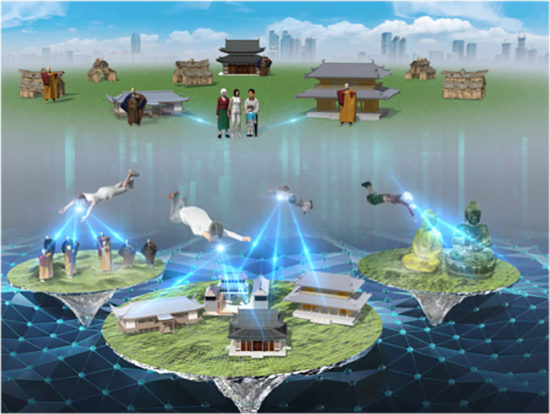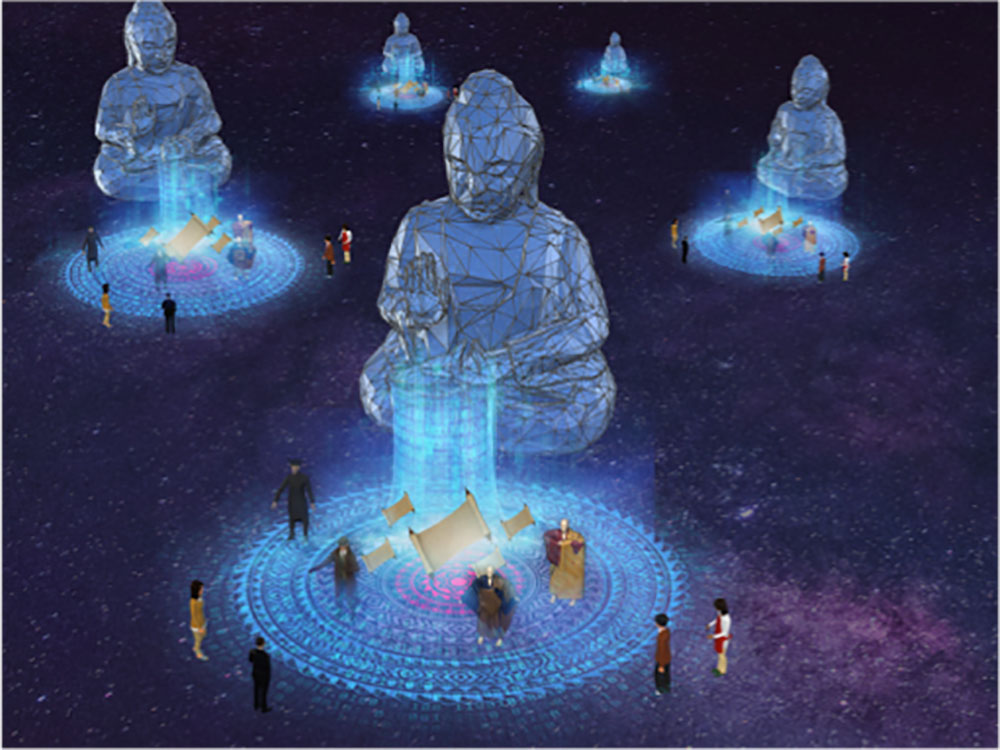BuddhaBot
Buddhists have had strong wishes:
“I wish the Buddha were here to help me…”
“I wish I could consult the Buddha anytime, anywhere about my problems…”
In order to fulfill such wishes, I and my research team at Kyoto University released “BuddhaBot”, a Buddhist chatbot AI in March 2021.
In Japan, Buddhism is in decline due to people’s declining religious beliefs because of modernisation and globalisation: 40 percent of Japanese temples have only about half the income of a secular household, making it difficult to run a temple in 2019. According to some statistics, 30 percent of Japanese temples will be closed by 2040.
Under these difficult circumstances, I was asked by a Japanese Buddhist monk Ven. Koshin Higashifushimi (Shorenin Temple, Vice Abbot) whether there is any way to prevent the decline of Buddhism in Japan. Japanese temples face problems that are peculiar to physical space, such as the cost of maintaining temple buildings and the loss of supporters in depopulated areas. In this situation, the use of cyberspace is likely to bring great benefits and sustainable development by avoiding difficulties produced in physical spaces. However, the cyberspace and artificial intelligence are rarely used in the religious field, especially in the Buddhist (academic) communities.

Tera-verse
So, we decided to develop a Buddhist chatbot AI, “BuddhaBot” (Fig.1) which enables users to interact with Buddhist scriptures by having the artificial intelligence machine-learn them.
In March 2021, our group released a prototype of BuddhaBot by using Sentence-BERT, an algorithm provided by Google, which offers sentences to find answers for users. As a data set, a question-and-answer list of about 200 items was extracted from the oldest Buddhist scripture, Suttanipāta and given to the BuddhaBot to learn. It was created so that users can freely ask questions to the AI that had completed machine learning, and the AI can offer learned sentences in answer to the user’s questions.
To date, all the data of the Suttanipāta has been learned and the data of the Dhammapada is being learned, and the number of data has exceeded 1,000. The data set is created by the team of Kyoto University’s Buddhologists: Dr Takahiko Kameyama, Mr Keiki Nakayama, Mr Seimin Kimura and Mr Kaoru Kominami. In addition, since the task of reading program code using a computer is difficult for average users, our group developed a LINE application so that users can interact with BuddhaBot using a smartphone. Program codes were written by the eminent programmer Mr Toshikazu Furuya (CEO, Teraverse, Co., Ltd.).
“Tera-Platform AR Ver1.0”
Chatbots allow for only text dialogue, but not face-to-face meetings. People may still want to talk to the Buddha directly, not just chat with texts. In order to fulfill this desire, we created “Tera-Platform AR Ver1.0”, the AR (Augmented Reality) combined with BuddhaBot. (Fig. 4)
This product uses the camera function of a smartphone to summon an avatar of BuddhaBot in front of the user through the smartphone screen. When the user speaks to the BuddhaBot avatar and asks questions or concerns, the BuddhaBot avatar provides an audio response based on Buddhist scriptures.
The BuddhaBot only allows communication at the text level, but the “Tera-Platform AR Ver. 1.0” includes visual and auditory elements in addition to text communication. This allows users to have a stronger sense of intimacy with their avatars.
“Tera-verse”
In addition to AR, we are currently developing “Tera-Platform VR” using VR (Virtual Reality) technology. For example, a cyber temple can be built and used as a kind of branch temple in VR cyberspace. It will also be possible for monks to communicate with followers using VR cyberspace.
When using current VR devices such as VR goggles, users are completely immersed in cyberspace and are disconnected from real space during that time. AR technology would be more useful for those who want to use cyberspace while proceeding in parallel with their real life in their physical space. In other words, avatar temples, avatar priests, avatar buddhas, and avatar saints can appear in real space and be used in conjunction with real temples, priests, etc. in real space.
We call this platform of a mixture of AR and VR: “Tera-verse”. (Fig. 5) As described above, through the Tera-verse, it is possible to realise a multilayered spiritual activity by merging the existing spiritual activity in the immersive space by VR and in the semi-real space by AR.
Possibilities and Risks of New Technologies
As mentioned above, Buddhism is in decline in Japan, and many Buddhist temples are facing economic difficulties: 30 percent of Japanese temples are said to be closed by 2040. The use of Tera-verse may be able to reduce the cost of maintaining physical temples and make it easier for followers from distant places to visit temples, thereby overcoming financial and geographical handicaps. In addition, through the Tera-verse, people far away from each other can be connected, new communities can be created around the theme of Buddhism, and new opportunities for encounters can arise. It could enrich human society spiritually and culturally, and enhance well-being.
While young people overvalue economics and technology, they are beginning to lose interest in tradition and religion. However, technologies such as AI and the metaverse have the potential to make the younger generation more interested in tradition and religion.
Finally, we mentioned the possible problems and risks of such new technologies. It is important to note that the development of technologies such as AI and the metaverse should not be the final goal. These technologies are only tools, and people’s well-being must be achieved through their use. It is also necessary to note that advanced technologies have the risk of being misused, thus people need to improve AI technology literacy without overestimating their value.
Contributed by
Seiji Kumagai
Associate Professor,
Kyoto University,
Japan


